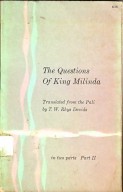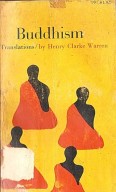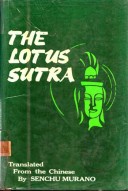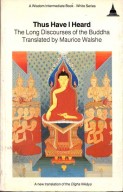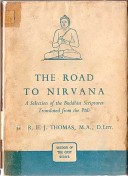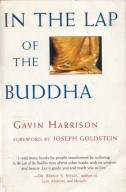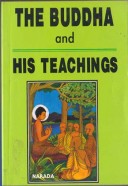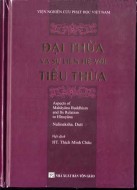Tìm Sách
Sách tiếng Anh-English >> The Life of Hsuan-Tsang
Thông tin tra cứu
- Tên sách : The Life of Hsuan-Tsang
- Tác giả : Hui-Li
- Dịch giả : Li Yung hsi
- Ngôn ngữ : Anh
- Số trang : 258
- Nhà xuất bản : Chinese Buddhist Association- Peking
- Năm xuất bản : 1959
- Phân loại : Sách tiếng Anh-English
- MCB : 1210000002548
- OPAC :
- Tóm tắt :
FOREWORD
During the past three years a series of activities in commemoration of the Ven. Hsuan-tsang have been carried out under the direction and with the assistance of the Buddhist Association of China. A number of valuable treatises regarding him and some popular books describing his life have been published. The Ching Ling Buddhist Text Society at Nanking has completed the task of carving new printing blocks to replace the lost ones for the complete works translated or written by the Ven. Hsuan-tsang. A memorial hall for him has been arranged in the Chinese Buddhist Academy in Peking, in which a piece of his relic-bone and his complete works, as well as other books, periodicals and pictures concerning him, are preserved. What is of particular importance is that the People’s Government of China, at the suggestion of the Chinese Buddhist Association, presented to the Government of India in December 1956 a portion of the Ven. Hsuan-tsang’s relic-bone, together with a donation for the construction of a memorial hall, to be forwarded to the Nàlandã Monastery — the alma mater of the Ven. Hsuan-tsang.
The translation and publication of The Life of Hsuan-tsang are part of the commemorative activities. It has been suggested that the whole works of the Ven. Hsuan-tsang should be translated either into English or Hindi. This would be too tremendous and difficult a task for us to undertake at present, for it could not be done in a moment. But, as the Chinese saying goes: “The first step is the beginning of travelling a distance of one thousand li,” so let hope that the translation of the present work is the first step leading to a long march of, ten thousand li.
It is, of course, impossible to understand, merely through a biography, the whole features of a great personage. But a good biography is not only a book for us to understand a certain person, it is also a key to the comprehension of a certain age. For instance, if we want to know about the most flourishing period of the Nãlandã Monastery and about the conditions of the study of Buddhism in ancient India, the present biography and the works of those people who went to India to study Buddhism in the same century as the Ven. Hsuan-tsang, especially the works of the Ven. Yi-ching, will provide us with important clues. It has been asserted by contemporary scholars that, owing to the emergence of such masters as Dinnága, Dharmapãla, Dharmakirti, Gupamati, Sthiramati, Prajnapala, etc., and due to the existence of such a great institution for learning as the Nálandã Monastery, the five courses of Hetuyidyã, Abhidharma, Vinaya, Madhyamaka and Yogãcãra were gradually established as the chief subjects of Buddhism for study in India after the 5th century A.D., and it was generally fixed that Hetuvidyã and Abhidharma were studied at the beginning, while Màdhyamaka and Yogacãra were the final courses in the curriculum. When the Ven. Hsuan-tsang was staying in the five parts of India, he studied under various masters who were experts in the different courses, and traced the origin of the Buddhist teachings. After u returning home he spent the rest of his life in translating Buddhist texts into Chinese and in propagating Buddhism. It was due to his efforts and to the works supplemented by the Ven. Yi-ching of a later period, that the essence of all the five courses of Buddhism, studied in the Nálandà Monastery during its most flourishing period, was introduced into China. Although these five courses of Buddhism underwent certain changes at a later time, their main and fundamental teachings did not go beyond the scope of doctrine as was introduced by these two Chinese masters of Buddhism. This is a fact that should attract the attention of modern Buddhist scholars.
The most important function of a great person’s biography is the education and encouragement it gives to his posterity. The Ven. Hsuan-tsang was born in the golden age of ancient Chinese civilization, and as a Buddhist he was not unworthy of his times. He made important contributions to the culture of his days. A new and unprecedented golden age of culture is approaching today. As successors of the Ven. Hsuan-tsang, we do not have the difficulties which, he experienced, but have many advantageous conditions which he did not enjoy in his period. What we should try our best to contribute to our present age is an urgent and important problem that is facing every Buddhist in China today. And this is the motive for Chinese Buddhists to commemorate this great master whose example we should follow.
The great achievements of the Ven. Hsuan-tsang were due to his great courage and assiduity. It was this spirit that made him undaunted in his journey to India when “he encountered snowstorms and sandstorms and where there was only one chance to survive out of ten thousand.” It made him resolute to study both Buddhist and non-Buddhist knowledge which was as limitless as the sea. It made him confident in undertaking the task of translating the abstruse and voluminous Buddhist texts into Chinese. His assiduity rendered him persistent in learning and working from his youth to his old age. He fully utilized his life, without wasting a single moment, and he made the best use of his abilities for the cause of Buddhism.
The Ven. Hsuan-tsang’s sublime character is shown in his selfless deeds for spreading the Dharma and for the benefit of others. It was because he possessed such a sublime character that he, after surmounting all hardships, could have been able to do what was difficult to do, to forsake what others would not forsake, to forbear what was hard to forbear, and to learn what was not easy to learn and, finally, to realize his ambitions. It was because he possessed such a sublime character that he was able to carry out his research work so extensively and elaborately with veracity and accuracy. And it was because he possessed such a sublime character that he was able to study with energy and to teach others tirelessly. He not only enhanced the knowledge of his days with his vast erudition, but also disseminated Chinese and Indian cultures by his large quantity of translations and writings, thus laying a lasting foundation for the friendship between China and India and leaving behind a brilliant example for the exchange of culture among different nations.
Although the Ven. Hsuan-tsang lived 1,300 years ago, his features that “are as stately as a divine being and as handsome as a figure in a painting” would appear before us and his “fine and sonorous voice and elegant talking” would resound in our ears, when we read his biography and study his works. Not only his manners that “are more graceful than a pine tree waving in a breeze and more refined than a lustrous pearl” would win our admiration, but his “everlasting merits and great deeds, as well as his ambition to save all sentient beings and to propagate the Right Law” would also inspite our respect and arouse us to follow his example.
Last but not least I must mention that to translate classical Chinese works into English is not an easy task. I should say here that Mr. Li Yung-hsi, the translator of this book, has done the work with meticulous care. It is hoped that this biography will present the image of a great personage vividly before the reader.
Chao Pu-chu
Vice-President of the Chinese .Buddhist
Association and Chairman of the
San Shih Buddhist Institute
May 1958, Peking
CONTENTS
Book I Beginning from His Birth at Koushih and Ending with His Arrival at Kaochang
Book II Beginning from the Country of Agni and Ending with the Country of Kanyakubja
Book III Beginning from the Country of Ayodhyã and Ending with the Country of Hiranyaparvata
Book IV Beginning from the Country of Champa and Ending with the Invitation of the King of Kãmarupa
Book V Beginning from the Divination of a Nirgrantha About His Homeward Journey and Ending with His Arrival in China
Book VI Beginning from His Return to the Western Capital in the First Month of the Nineteenth Year and Ending with the Composition of the Imperial Preface to the Holy Scriptures in the Sixth Month of the Twenty-second Year of Chen Kuan
Book VII Beginning from the Composition of the Preface to the Holy Scriptures by the Crown Prince in the Sixth Month of the Twenty-second Year of Chen Kuan and Ending with a Letter by the Master in the Second Month of the Filth Year of Yung Hui
Book VIII Beginning from the Completion of the Translation of the Nyayadvarataraka Sãstra in the Fifth Month of the Sixth Year of Yung Hui and Ending with the Imperial Inscription for the Tzu En Monastery in the Third Month of the’ First Year of Hsien Ching
Book IX Beginning from a Letter of Thanks for the Inscription of the Tzu En Monastery in the Third Month of the First Year of Hsien Ching and Ending with a Letter of Thanks to the Emperor for Inquiring After the Master’s Illness
Book X Beginning from the Emperor’s Return to the Western Capital in the First Month of the Third Year of Hsien Ching and Ending with the Death of the Master at the Yu Hua Palace in the Second Month of the First Year of Lin Teh
 Facebook
Facebook
 Google
Google
 Google+
Google+

